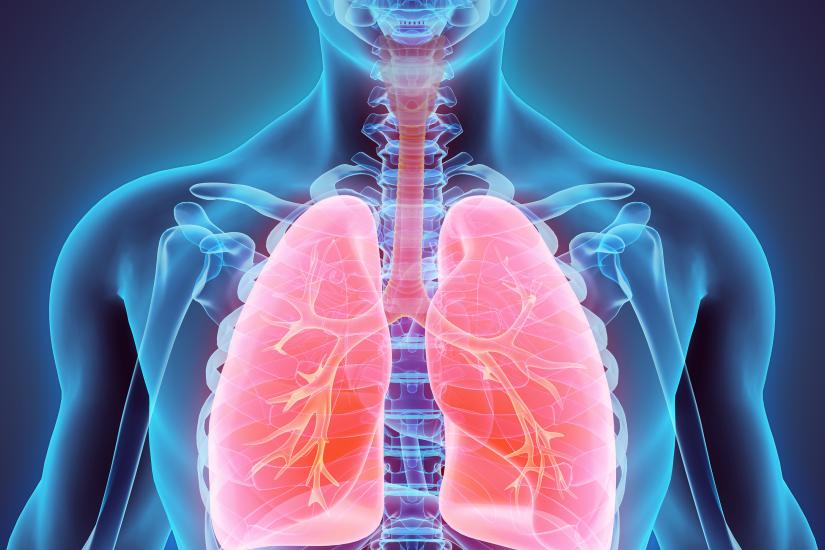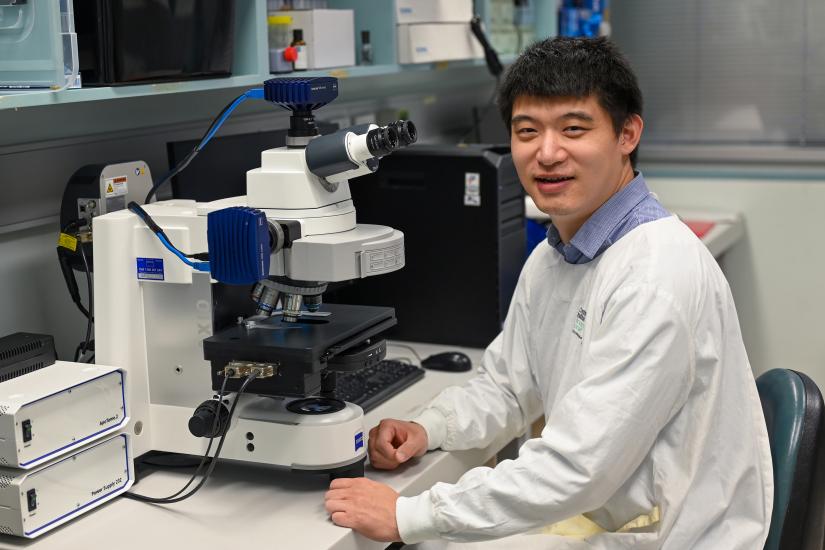Researchers at the Centenary Institute and UTS have identified a new drug target for the treatment and prevention of chronic obstructive pulmonary disease, an inflammatory lung disease that causes airway blockage and makes breathing difficult.

There is no cure for chronic obstructive pulmonary disease and effective therapies to treat and manage the disease are urgently needed. Photo: Adobe Stock
Secreted by mast cells, a part of the immune system, the drug target is an enzyme known as mast cell chymase-1 (CMA1).
CMA1 was found by the researchers to actively promote and progress the development of chronic obstructive pulmonary disease (COPD). Inhibiting the equivalent enzyme in mice was shown to provide protection in experimental models of COPD. New drugs targeting CMA1, said the researchers, could offer up a new therapeutic approach to tackling COPD, a disease that affects more than 300 million people globally.
Dr Gang Liu, the study’s lead author and researcher at the Centenary UTS Centre for Inflammation, said COPD was caused by cigarette smoke, air pollution, as well as bushfire smoke and other particulate matter.
“Over time the lungs breathe in toxic material and become inflamed. Lung function is subsequently impaired leading to breathing difficulties which can then turn fatal,” said Dr Liu.

Respiratory diseases expert Dr Gang Liu, from the Centenary UTS Centre for Inflammation, is lead author on the study.
In their new study, the researchers discovered elevated CMA1 levels in the lung tissues of patients with severe COPD – the CMA1 levels were approximately double that found in the lung tissue of mild-COPD patients and healthy individuals.
“CMA1 induces macrophages (a type of white blood cell) to release pro-inflammatory cytokines in the lung. It’s this increased inflammation that can drive the development of COPD and poor outcomes for patients,” said Dr Liu.
Subsequent investigation of the equivalent CMA1 enzyme found in mice – an enzyme known as mMCP5 – confirmed the enzyme’s pivotal role in COPD.
It’s this increased inflammation that can drive the development of COPD and poor outcomes for patients.
Dr Gang Liu
“We were able to show in experimental COPD, that inhibiting mMCP5 provided protection against inflammation and macrophage accumulation, harmful structural changes of the lung, emphysema and impaired lung function,” Dr Liu said.
Professor Phil Hansbro, the study’s senior author and Director of the Centenary UTS Centre for Inflammation, said the team’s research offered up a new therapeutic target to help combat COPD.
“There is currently no cure for COPD and effective therapies to treat and manage the disease are urgently needed. Our study suggests that developing new drugs to inhibit CMA1 and reduce cytokine inflammation may be a novel treatment for this devastating disease that affects so many lives,” Professor Hansbro said.
The study, Adverse roles of mast cell chymase-1 in chronic obstructive pulmonary disease, is published in the European Respiratory Journal.

